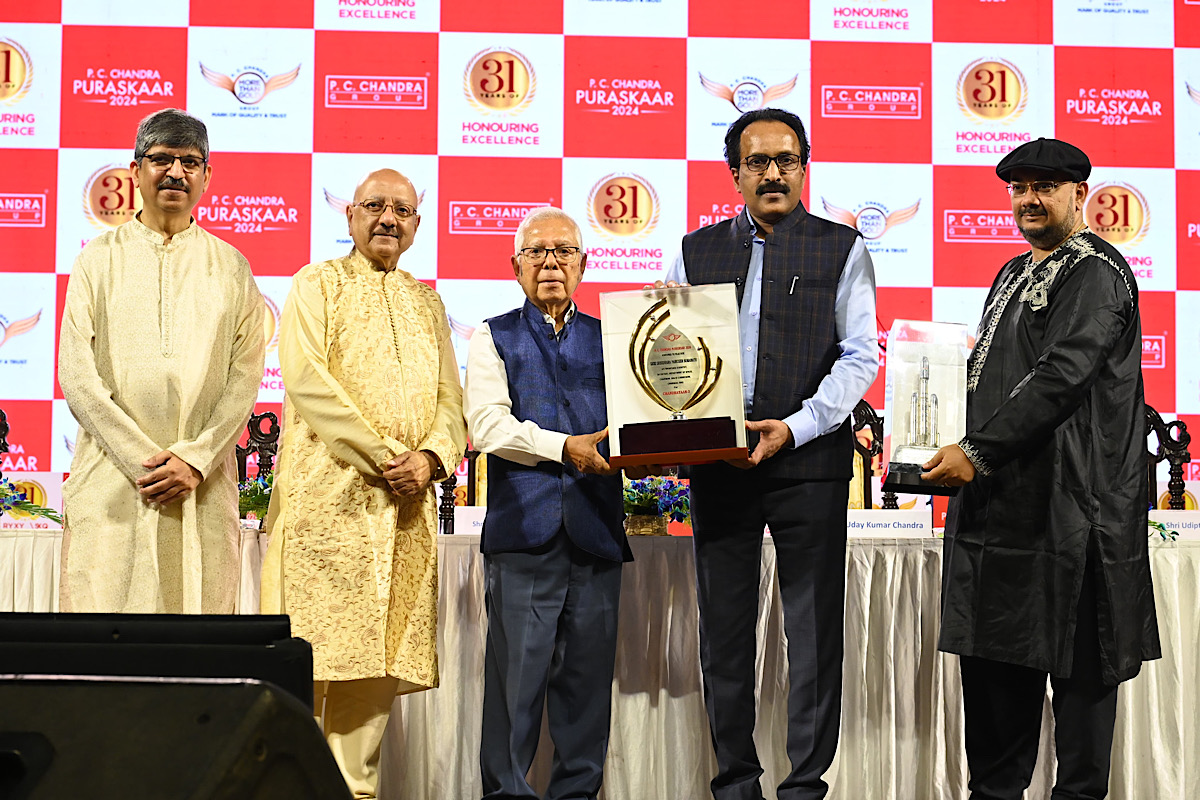“The Aditya-L1 is set to observe the sun in a continuous manner for 5 years. According to the observations made by ISRO, the sun is approaching its peak solar activity. The outcome of such observations can possibly be something that one is not aware of. As far as I am aware of the data collected by this coronagraphy spacecraft for studying the solar atmosphere, we did not gather much as this is a long-term observational project. Observations are especially made during times of solar eclipses. We have different types of instruments, such as instruments for UV, X-ray, matter recharge, particle observations, and many more, for getting accurate results”, said S Somanath, Chairman of ISRO, to The Statesman in a press conference on 21 April.
In Kolkata, for the 31st edition of the Annual Award Ceremony, the PC Chandra Group, to celebrate its 85th year, felicitated S Somanath. He is the eminent leader behind India’s triumphant Chandrayaan-3 mission. Dr S Somanath received the felicitation in the presence of AK Chandra, managing director of PC Chandra Group as well as Amitava Chandra, deputy managing director, PC Chandra Jewellers, and Udipto Chandra, Director of PC Chandra Jewellers at Science City Auditorium, Kolkata.
Advertisement
S Somanath is a distinguished scientist and secretary in the Department of Space, Chairman of the Space Commission, and Chairman of ISRO since 14 January, 2022. His career spanned over 28 years, starting as the director of the Liquid Propulsion Systems Centre (LPSC), where he developed the CE20 cryogenic engine and the C25 stage of the GSLV Mk-III D1 flight. He then proceeded to be the director of Vikram Sarabhai Space Centre (VSSC) in 2018, the lead centre of ISRO, where under his leadership, the VSSC achieved significant feats like the Crew Escape System demonstration through the Pad Abort Test (PAT), the launch of the GSLV Mk-III M1/Chandrayaan 2 etc. He spearheaded the development of critical systems for the Gaganyaan programme on development of small satellite launch vehicle, reusable launch vehicle and air-breathing launch vehicle programmes.
“The VSCC recently achieved a breakthrough in rocket engine technology with the development of a lightweight Carbon-Carbon (C-C) nozzle for rocket engines. It was a tough nut to crack since we have been trying it for 20 years, and finally, it was successful. The nozzle is a thin, fragile glass that can be broken due to its carbon composition. Shattered with great ease. It is made with carbon, and that’s what makes it lightweight”, added ISRO chief Somanath.
As Secretary, he piloted the National Space Policy, facilitated IN-SPACe activation, engagement of ISRO with new space actors in NGPE and start-ups. Chandrayaan-3 mission remained a success under his leadership, inspiring many youngsters today to strive for similar accomplishments and consider him a role model.
“Students should be encouraged to take science and technological courses, not just space research. For that, the nation should prioritise the improvement of science and technological sectors and provide them with a healthy working environment. We already have good employment in the IT sector. We have also made progress in the medical and pharmaceutical sectors. We can now focus on enhancing more sectors like AI and robotics, agriculture, telecommunications, electronics, and urban technological sectors. Young players in the field must also be made aware of the benefits and challenges of each and every course,” opined Somanath.
The programme concluded with the ISRO chief visiting and taking photographs with three little admirers of him, along with euphonious tunes and lyrics performed by the eminent singer, Anupam Roy.











